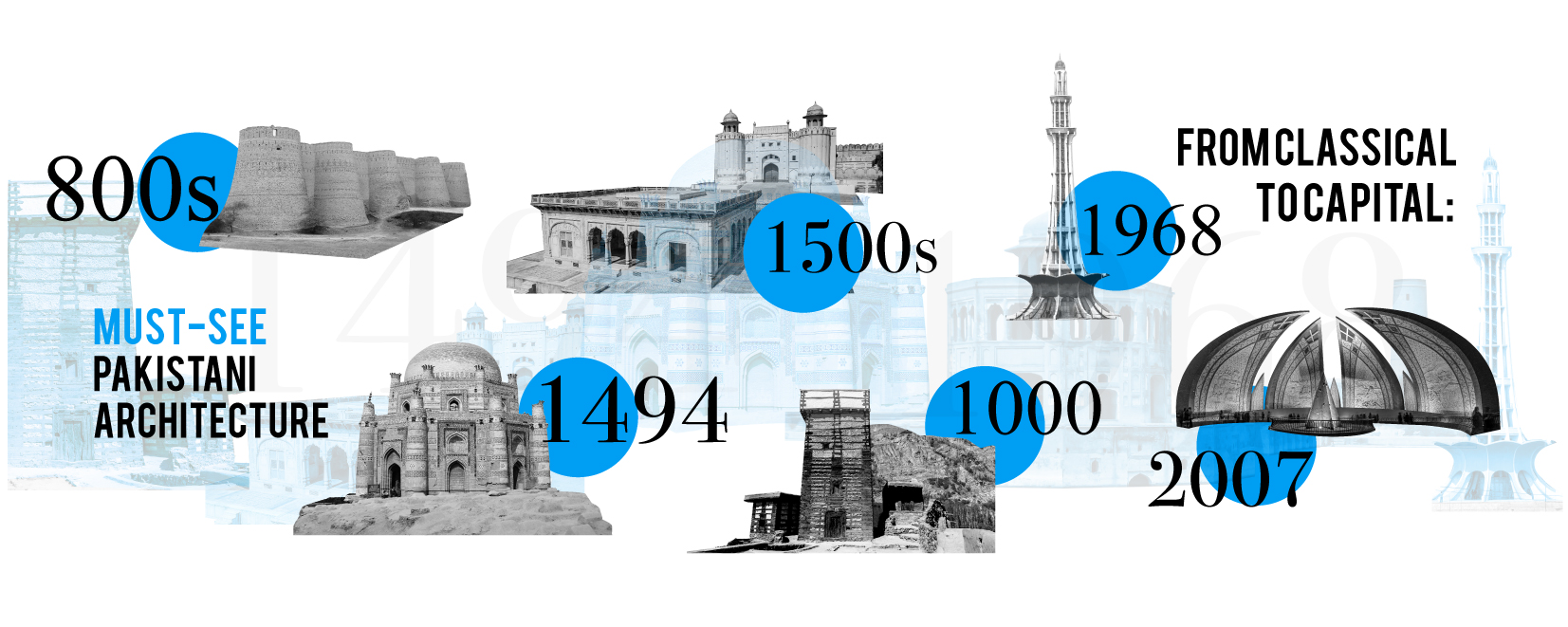
A 9th century landmark, the 40 bastions that tower at 9 storeys high are visible for miles across the Cholistan Desert in Pakistan. Its imposing size makes it a remarkable medieval relic. Unlike the castles and forts of Europe that were typically straight-walled, the adorning bastions create a wave-like effect.
Built during the 11th century, Altit Fort was home to the Mir, or king, of Hunza. The angular, square layout was common to the Western Himalayas. The four elaborately carved wooden pillars that adorn the lantern-roofed room on the fort’s second floor make this building stand out.
The tomb, which was constructed in 1494. Is widely considered to be one of the most ornate monuments in Uch. The octagonal structure features decorated turrets on each corner. Across the exterior are bands of blue, white and azure glazed tiles, as well as intricately designed floral tiles.
While the fort’s original structure is un-dated, the second earliest addition was constructed in the latter half of the 1500s. The fort has been modified and rebuilt so often that it offers a dramatic journey through Pakistan’s cultural heritage. To walk through Lahore Fort is to walk through architectural history.
The structure was commissioned in honour of Mughal Emperor Jahangir’s pet antelope who he accidentally shot while out on a hunt. The original minaret was completed in 1606, with the pool and pavilion added shortly afterwards. The inscribed stonework reflects the Mughal ideas of relationships between humans, animals and hunting.
Originally intended as a Town Hall, Frere Hall is an early example of British colonial-era architecture in Pakistan. Located in the coastal city of Karachi, the building displays Gothic and Venetian architectural styles but constructed with local materials, creating a unique blend of European design with Pakistani soul and heritage.
The Faisalabad Clock Tower is one of the oldest state buildings in Pakistan from the period of the British Raj. The tower was built in 1905 and is an exquisite example of Indo-Saracenic architecture which fused the native Hindu and Islamic architectural forms of the region with British Gothic flourishes.
13 years after Pakistani independence, the government established a special commission to create a new capital city from scratch. This huge masterplanning project became RMJM’s introduction to Pakistan, as we worked alongside renowned Pakistani engineers Osmani, Greek masterplanners Doxiadis and American scholars at Harvard University.
Constructed in the 1960s, this monument was built in Lahore for the city’s links to the independence movement. The base resembles a 9-metre tall blossoming flower with the platforms inside symbolising the freedom struggle through materials at various stages of distress starting with uncut stone and ending with polished marble.
The Pakistan Monument echoes the blossoming flower motif of the Minar-e-Pakistan monument. Adorning the inner walls of each petal are artworks depicting the landmarks of Pakistan including Lahore Forte, Badashahi Mosque, Khyber Pass and Minar-e-Pakistan. The architect reflected that “We should learn from history but not remain in it.”
Once again spearheading an ambitious masterplan, RMJM, Osmani and Doxiadis came together to collaborate on the DHA ‘green city’, the first of its kind in Pakistan. Currently under construction, DHA Karachi City proves that modern marvels don’t need to rely on fossil fuels to be extraordinary feats of engineering.


